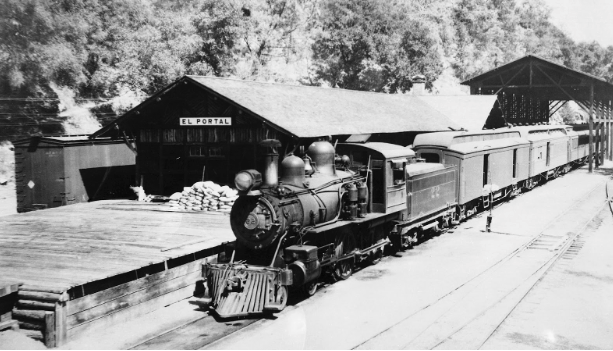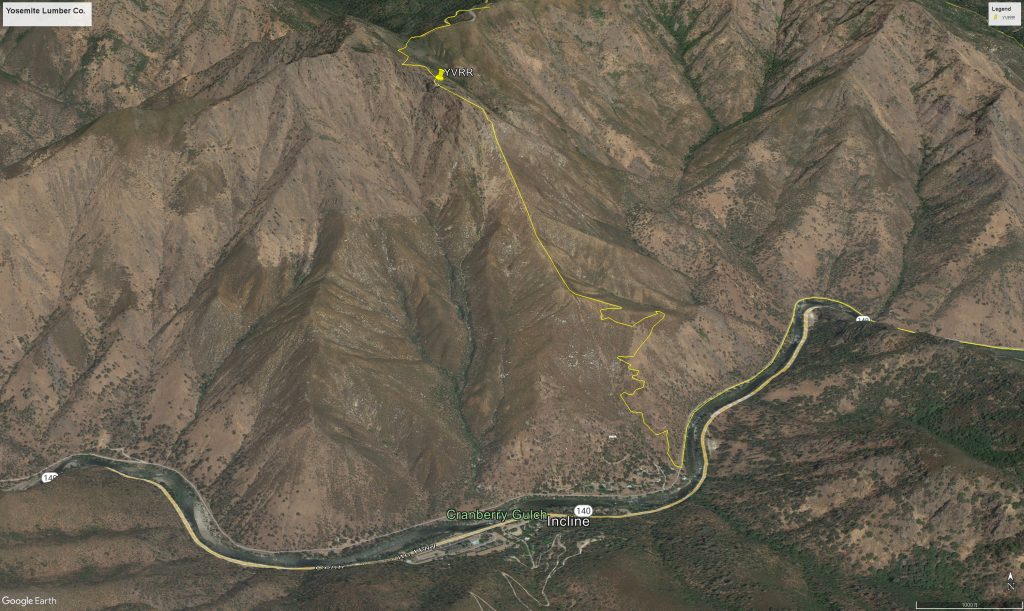
Photo Credit: nps.gov
The 80-mile Yosemite Railroad, which operated from 1902–1945, has a rich history that’s intertwined with the development of Yosemite National Park and its surrounding communities. It’s a story of timber, transportation, and tourism that spans over a century. Let’s dive into a few fascinating facts about the Yosemite Railroad, which ran from Merced, California to Yosemite National Park, that you may not know.
It Was Built to Support the Lumber Industry
The Yosemite Railroad, officially known as the Yosemite Valley Railroad (YVRR), was initially established to transport lumber from the Sierra Nevada forests. The Yosemite Lumber Company, which was founded in 1911, used the railroad to transport felled trees from the company’s vast timber holdings. Due to the area’s steep mountain ranges, the company actually had to build the steepest logging incline ever at 3,100 feet, which made the railway a great engineering challenge. This 940 meter route tied the high-country timber tracts in Yosemite National Park to the low-lying Yosemite Valley Railroad that ran alongside the Merced River.
Passenger Rails and Automobile Tourism
Stagecoach routes dominated travel and tourism in the area since the mid-1870s, but this was replaced with the YVRR, which became the main form of transportation to Yosemite for tourists between 1907 and 1945. However, by the 1940s the “All-Year Highway,” which is now known as Highway 140, was opened. This highway made the drive to Yosemite relatively easy all year long with low elevation and wide turns. With this, motorists began to flock to the park in their own transportation, and a bus service began at a much lower fare than the train – causing an eventual decline in civilian riders.

Photo Credit: nps.gov
It Had a Grueling, Yet Beautiful Route
The Yosemite Valley Railroad ran an around 80-mile route from Merced to El Portal, which was considered a challenging journey. The line followed the Merced River and passed through dramatic landscapes, offering passengers spectacular views of the Sierra Nevada mountain range. Along the way, the train passed through places like Bagby, Incline, and eventually reached the small town of El Portal, which acts as the “gateway” to Yosemite.
Remnants of the Railroad Can Still Be Seen Today
Although the railroad ceased operations many years ago, traces of the old line still exist today. In certain areas along the Merced River, you can spot remnants of the old track beds and tunnels. Various markers along the former route provide a glimpse into the railroad’s historic path. The legacy of the YVRR lives on in these scattered relics and the memories of those who traveled on it.
If you visit El Portal today, you’ll find an old locomotive, preserved as a reminder of the Yosemite Valley Railroad’s legacy. This locomotive is significant, as it’s one of the few surviving pieces of the railroad’s history. The engine, parked at the end of the old tracks, served the railroad until 1945. The locomotive now stands as a testament to the importance of the railroad in shaping Yosemite tourism.
A Connection to Yosemite Cedar Lodge

Elevation at the pin, which was the end of the Incline Slope at 4,400 feet, or 2,860 feet higher than the river.
The Yosemite Valley Railroad had a challenging section of its route near what is now Yosemite Cedar Lodge. In fact, this Incline Slope is 4,400 feet, or 2,860 feet higher than the river! This area was part of the Merced River Canyon, where the railroad faced significant elevation changes. The steep climb was particularly used for logging operations, where logs were transported from higher elevations to the main line for shipment down to the valley.

